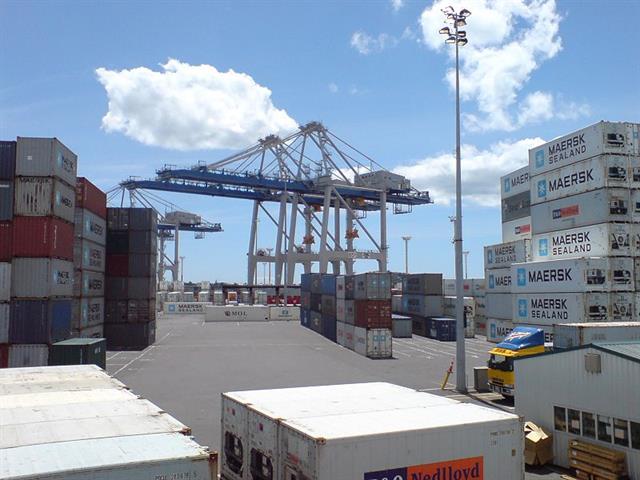 Crane rates were up 9.4% and staff hours per container down 15.0% in December 2008, compared to 2007 at Ports of Auckland.
Photo source: Ports of Auckland |
Ports of Auckland announced a net profit after tax of NZD9.3 million for the half year to 31 December 2008, compared to NZD12.6 million for the first half last year. The 2007 half-year result included a one-off NZD1.5 million tax credit.
Container volumes reached a record high of 455,083 TEU, up 6.4% on the same period in 2007. Container division EBIT was up 8.4% on the six months ended 31 December 2007 and 35.5% on the six months ended 30 June 2008.
As shipping lines consolidated operations to reduce cost, Ports of Auckland has attracted bigger services carrying more volume.
Trans-shipment numbers were up 33.5%. "This increase reflects shipping line decisions to hub services off Auckland, using regional ports as feeder ports," says managing director Jens Madsen.
Crane rates were up 9.4% and staff hours per container down 15.0% in December 2008, compared to 2007.
"These improvements are very encouraging - crane rate is a key customer service measure and staff hours per container have a direct impact on our bottom line."
However, Ports of Auckland's overall result was significantly impacted by imported vehicle volumes dropping 23.7% to 66,493 units.
General wharves containers and break-bulk division EBIT decreased 15.7%. General wharves tonnage (excluding vehicle units) was down 3.06% to 767,694 tonnes.
Port Operations EBITDA was NZD36.8 million, down 0.6% compared to the same period last year and, including the impact of depreciation, Port operations earnings before interest and tax were NZD26.2 million, down 6.3%.
Capital expenditure was $7.4m compared to $26.5m in the first half of FY08 following the completion of the Rangitoto Channel deepening, among other projects.
Madsen says trade volumes were weak over January and February, but had picked up slightly with the beginning of the export season in March.
"However, there is no doubt that the trading environment in New Zealand and abroad is extremely challenging, and will continue to be so in the foreseeable future.
"It is difficult to accurately forecast forward volumes; however, we are encouraged by our recent market share gains and ability to reduce costs."